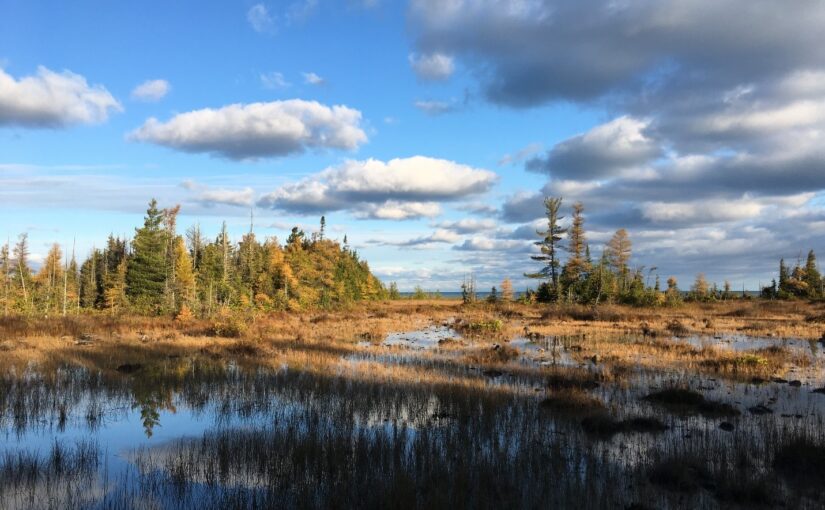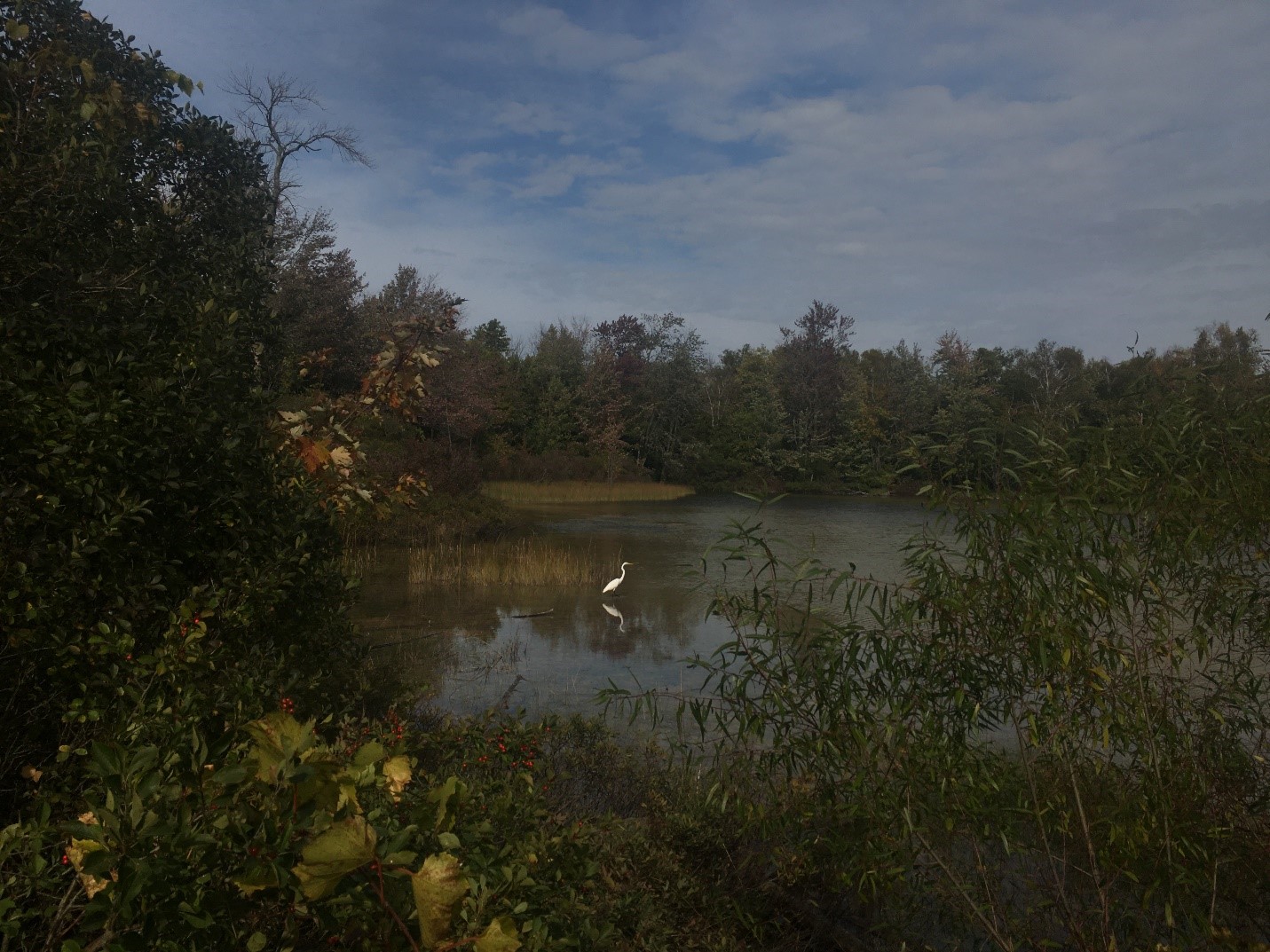Our “Forever Protected” series shares why each and every park belongs in Ontario Parks. In today’s post, Kathleen Houlahan Chayer tells us MacGregor Point’s story.
I worked as the Discovery Leader at MacGregor Point Provincial Park for four years, but it wasn’t really until I started working at Pinery (another park that I’m glad is forever protected) that I fully appreciated why MacGregor Point belongs in the Ontario Parks system.
MacGregor Point’s representative ecosystems
Situated on Lake Huron, MacGregor Point is an excellent example of the importance of preserving representative ecosystems in the Ontario Parks system, wherein parks are protected for their unique features in order to preserve the huge diversity of ecosystems found in Ontario.
Though Pinery, Point Farms, and Inverhuron are all also found along the coast of Lake Huron, MacGregor Point is incredibly different from these other parks, and offers wonderful insight into the importance of wetlands!
MacGregor Point is situated on a significant migratory pathway for birds called the Huron Fringe.
Lake Huron funnels birds migrating north to the Boreal Forest along the coast, which means the habitats protected in MacGregor Point are a critical rest spot on their journey.
The rocky, cobbled shoreline and thick white cedars adjacent to the shore are a prime habitat for midges, stoneflies, and mayflies — the perfect snack for migrating warblers.
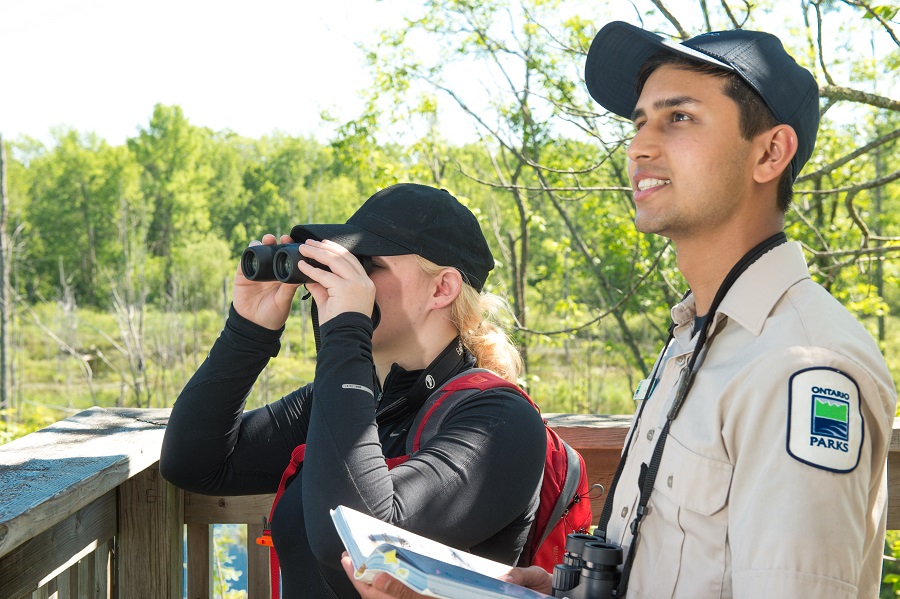
MacGregor Point’s cobbled shorelines are often found interspersed with coastal fens and Great Lakes marsh ecosystems.
In fact, MacGregor Point protects numerous provincially significant wetlands!
In recent history, wetlands haven’t always been appreciated as “useful” land, however we know now that wetlands are teeming with life!
They act as nurseries for amphibians, such as frogs and salamanders, they clean our water and provide flood control, and they are critical habitat for species ranging from muskrats to egrets.
MacGregor Point’s representative species
Protecting each Ontario species is a crucial part of maintaining a representative system of parks. Just like we want to protect each type of ecosystem, we want to protect every species represented in an ecosystem, from towering pines to tiny beetles.
Here are a few important species MacGregor Point protects:
1. Dwarf Lake Iris (Iris lacustris)
This stunning little wildflower is one of the happiest signs of spring at MacGregor Point.
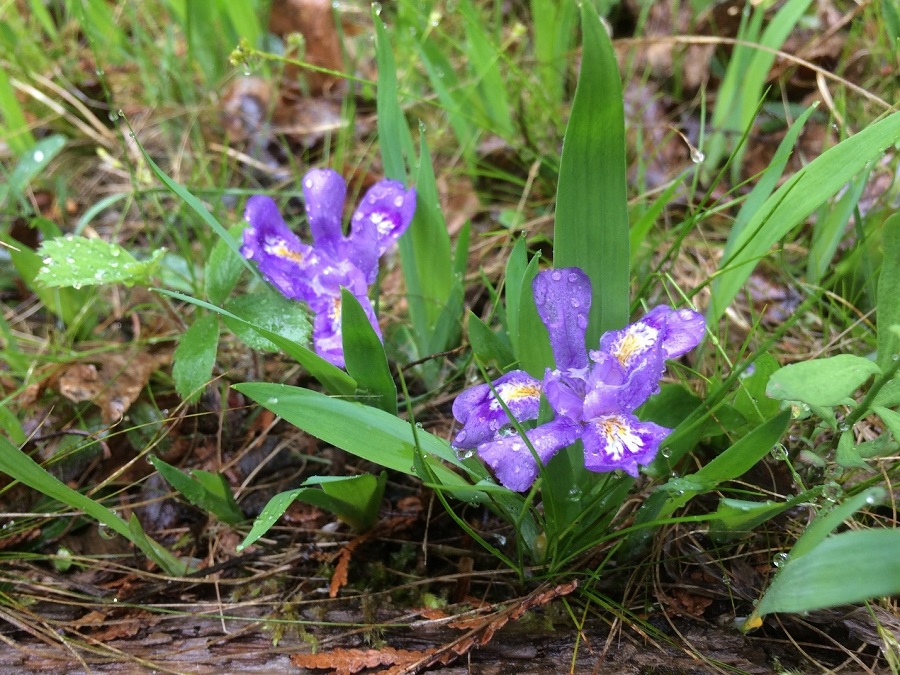
This special type of iris lives exclusively in the Great Lakes area, and is a Species of Special Concern in the Endangered Species Act.
2. Eastern Ribbonsnake (Thamnophis sauritus)
This sleek little snake looks very similar to the more common Eastern Garter Snake, however Eastern Ribbonsnakes are wetland specialists.
A great way to tell the difference between the two species is by looking for a small white crescent in front of the eye of the ribbonsnake that garter snakes do not have.
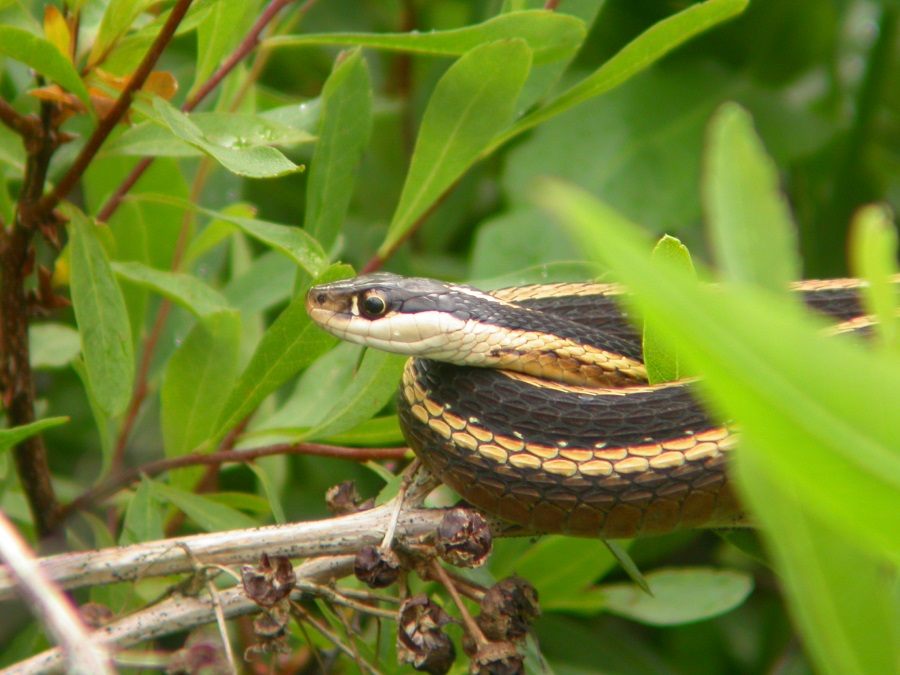
Ribbonsnakes are semi-aquatic and almost always found close to one of the park’s many wetlands. Unfortunately, because of widespread loss of wetland habitat in Ontario, the ribbonsnake is listed as a Species at Risk.
3. Porcupine (Erethizon dorsatum)
These adorable but prickly mammals are frequently seen at MacGregor Point, and can often be spotted towards the tops of Trembling Aspen trees.
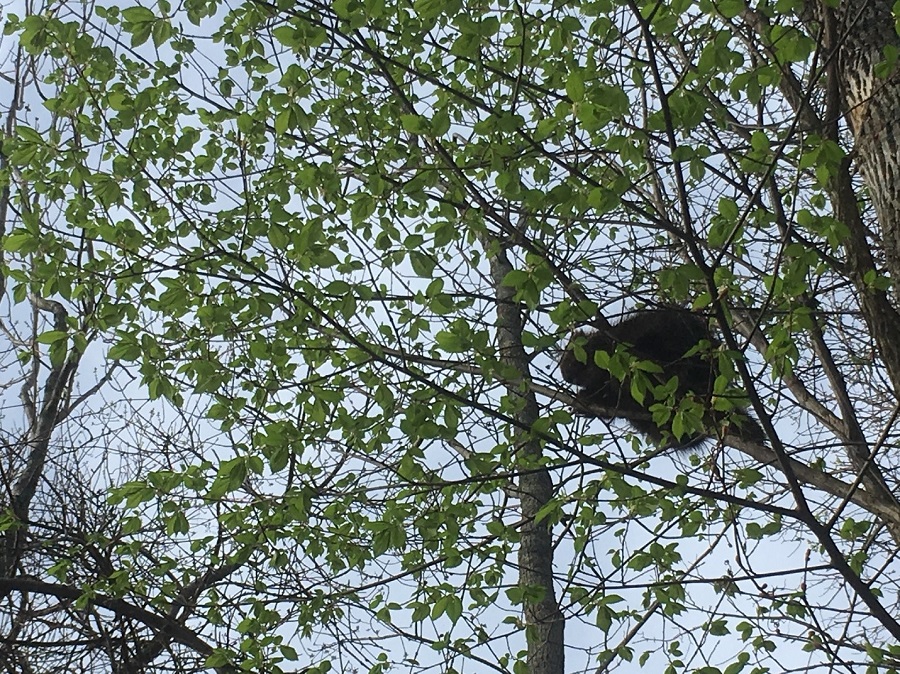
Happily, porcupines cannot “shoot” their quills, and if you give them space and respect, there is no reason to be afraid of them.
4. American Redstart (Setophaga ruticilla)
This striking little bird is one of the many species of warblers that nest at MacGregor Point.
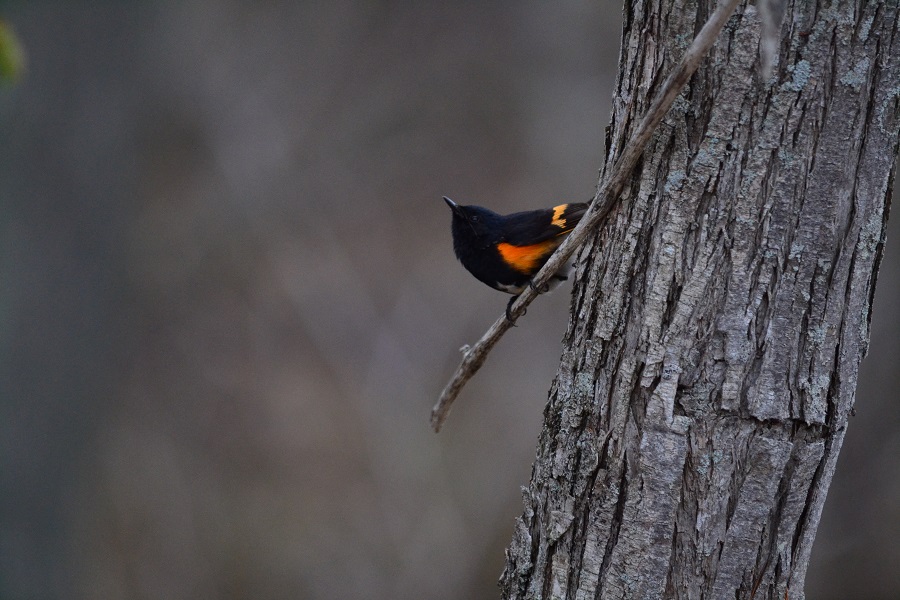
They can be observed foraging for insects in the trees and shrubs that border the park’s many wetland habitats.
Look for flashes of orange as they hop from one branch to another looking for flies, leafhoppers, beetles, and moths!
5. Pitcher Plant (Sarracenia purpurea)
MacGregor Point is home to ten species of carnivorous plants (plants that consume animals, such as insects)!
The bizarre and beautiful Pitcher Plant is the easiest carnivorous plant to spot in the park due to their larger size and bright mauve flowers.
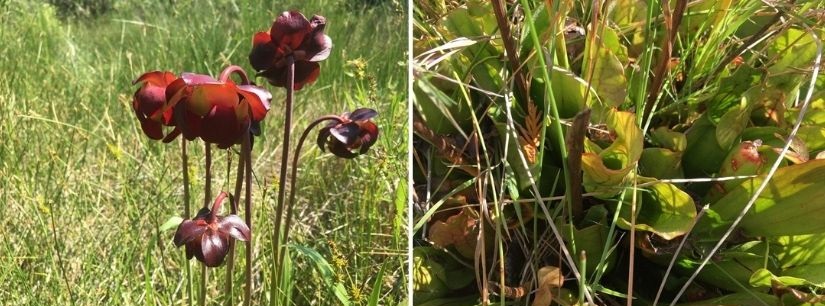
The park owes the presence of these plentiful carnivorous plants to the nutrient-poor conditions of the fens of the park. Not getting everything they need to thrive from the soil, carnivorous plants have evolved to gather sustenance from other beings.
The staff at MacGregor Point have helpfully constructed numerous boardwalks and viewing platforms to help visitors enjoy the unique wetlands where Pitcher Plants are found, but please remember that these areas are sensitive, so we ask that you never step off boardwalks or platforms into the wetlands.
MacGregor Point’s representative heritage
Lake Huron and the glacial lakes, such as Lake Algoma and Lake Nipissing that came before it, have shaped the human history on the land that would become MacGregor Point for hundreds if not thousands of years.
The glaciers that formed these glacial lakes as they retreated left behind large rocks referred to as glacial erratics. These rocks are often gneiss and granite, however quartzite boulders have also been found which originated from the La Cloche Mountains around Killarney Provincial Park.
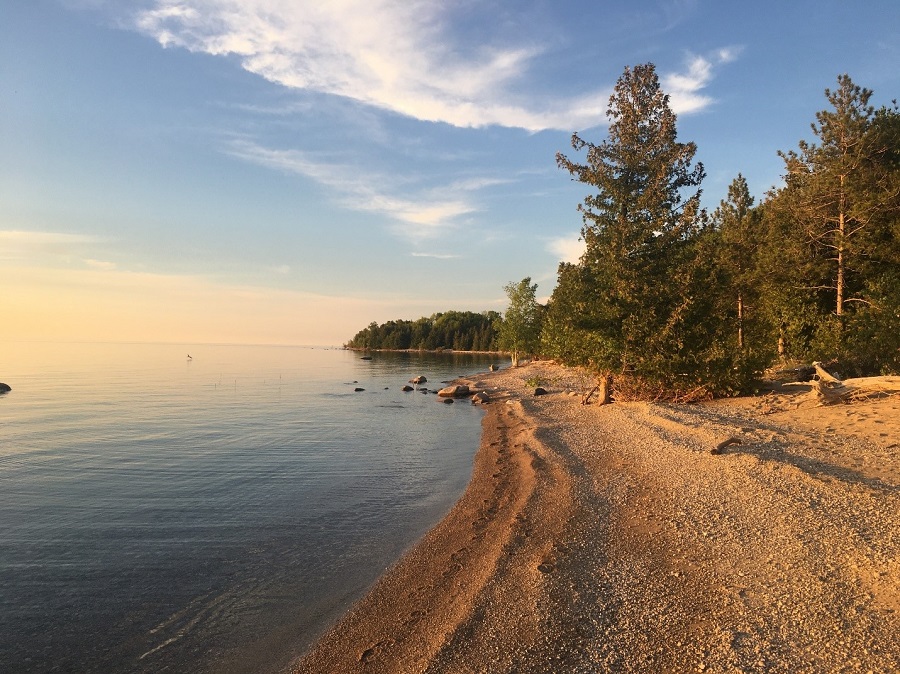
These rocks form the cobble beaches found along the shoreline, but are also found in the soil throughout the park. In many locations throughout the park, these rocks have been gathered into rock fences in an attempt to clear land for farming.
As you enjoy the bike trails and the beach at the park, it can be interesting to consider the long journey these rocks have taken to make their way to MacGregor Point Provincial Park.
Visiting the park I love?
If you’re a keen naturalist, consider sharing your sightings through the Ontario Parks iNaturalist project! We use this information to track the biodiversity of these our parks.
Stay tuned for more Forever Protected posts about the amazing natural spaces that form our network of provincial parks.
